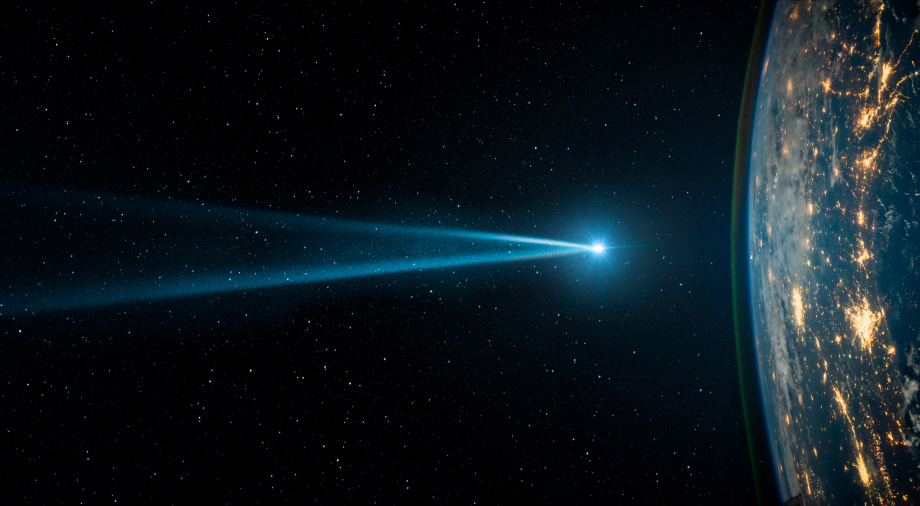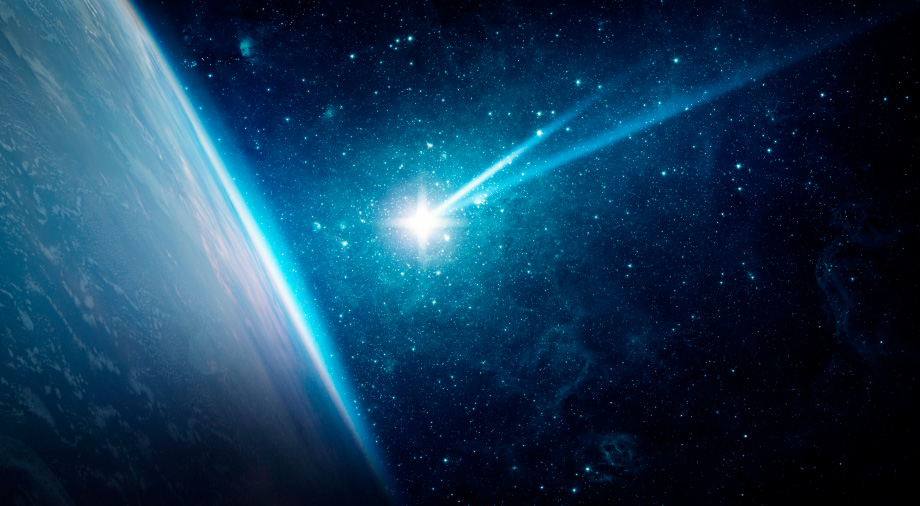In the first part of our series, we talked about how astronomers uncovered the nature of comets and determined their origins. Now we will talk about the space missions that study these “tailed stars.”
International comet explorer
In 1986, Halley’s comet was set once again to return to the inner part of the solar system. Given its significance to the history of science, it was no surprise that space agencies began to develop plans to send various research missions to the extraplanetary visitor.
The most ambitious project came from NASA, which proposed sending a probe equipped with a huge solar sail to the comet. This would allow the probe to enter a permanent orbit around the “tailed star” and conduct a comprehensive study, with a landing on the surface at the end of the mission.
However, due to the large scale of the project and the delay in putting the shuttles into operation (which were necessary to launch the comet “sailboat” into space), the mission never received the green light. However, NASA still managed to write itself into history as the first organization to explore a comet using a spacecraft. However, it ended up not being Halley’s comet, but instead the Giacobini-Zinner comet. More interestingly, the probe that visited it was not originally intended for this purpose at all.
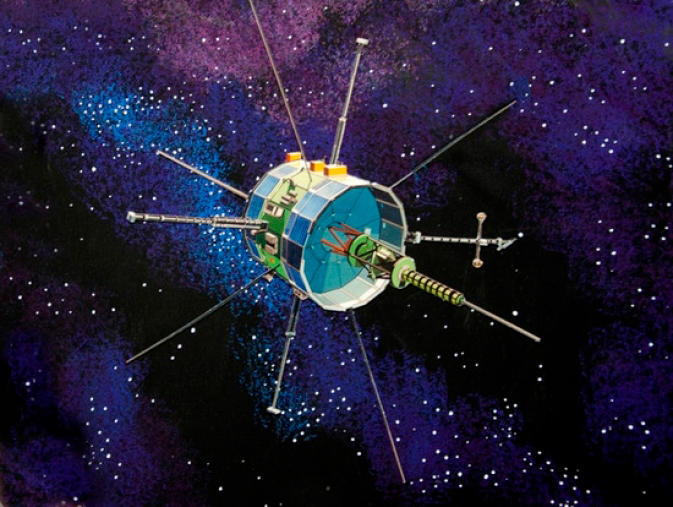
The device ISEE-3 was launched in 1978 to study solar wind and cosmic rays. After completing its main mission, NASA decided to send ISEE-3 to the comet Giacobini-Zinner. For this occasion, the spacecraft was re-designated the “International Comet Investigator.” On September 11, 1985, it successfully passed through the comet’s tail (coming as close as 7,862 kilometers to the comet), studying the interaction between the cometary atmosphere and solar winds.
Decades later in 2014, a team of amateurs managed to restore contact with ISEE-3. After doing so, they tried to activate the spacecraft’s engines in order to direct it to the L1 Lagrange point, and then to bring its scientific instruments back online. Unfortunately, ISEE-3 failed to perform the required maneuver, and contact was lost shortly thereafter.
The Halley’s Comet flotilla
The International Comet Explorer was a prelude to much larger events in 1985 and 1986, during which a whole “armada” of five spacecraft visited Halley’s Comet. They were the Soviet Vega-1 and Vega-2, the Japanese Sakigake and Suisei, as well as the European Giotto. The latter three were ESA and JAXA’s first vehicles ever sent into interplanetary space.
The most interesting data came back from the Vega’s and Giotto. They were able to photograph the comet’s nucleus, which made it possible to determine its approximate size and rotation period, as well as its reflectivity. It turned out that Halley’s comet reflects only 4% of the sunlight falling on it, which is comparable to the albedo of charcoal.
Giotto managed to get the closest of all the probes, but this visit almost cost the apparatus its life. At a distance of 1200 km from the core, the probe was struck by a particle of debris at super high speed, sending it spinning and knocking out its transmission back to Earth.

But much to the surprise of the engineers, the unmanned probe miraculously survived the rendezvous, passing only 596 km from the comet’s nucleus. After 32 minutes, Giotti managed to restore stabilization, after which he transmitted the data collected during the flyby.
Subsequent analysis of the Giotto images showed that the nucleus of Halley’s Comet is peanut-shaped. Its dimensions are approximately 15 x 7.2 x 7.2 km. Halley’s core has a very diverse topography, including uplands, ridges, depressions, and traces of impact craters.
As for the Japanese probes, they concentrated on studying the cometary coma and how it is affected by solar wind. The data they collected made it possible to significantly enhance our knowledge of how comets interact with the radiation released by our sun.
Collection of matter and bombarding a comet
The next generation of comet missions went into space in the late 1990s. The first was Deep Space, whose main mission was to develop new technologies, primarily testing an experimental ion engine (it went down in history as the first NASA probe to receive this kind of power unit). At the same time, Deep Space was also assigned scientific tasks, including studying the Braille asteroid and the Wilson-Harrington comet.
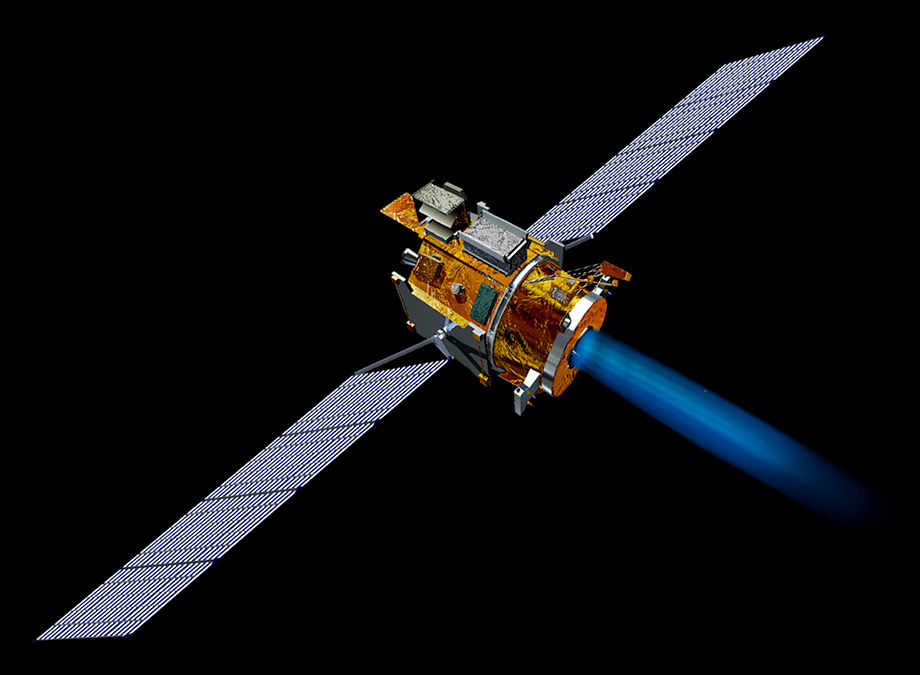
Unfortunately, due to a malfunction in the operation of that same ion engine, Deep Space was never able to reach the Wilson-Harrington comet. However, the mission staff managed to find a backup target in the form of the Borrelly comet. In September 2001, Deep Space flew within 2,170 km of its core. Images transmitted to Earth showed that it resembles a bowling pin, measuring 8 by 4 km. Deep Space was also able to photograph a jet of gas streaming from behind it that stretched for 60 km.
In 1999, the Stardust probe was launched to retrieve a sample of matter from the tail of comet Wild. For this, the probe was equipped with special traps filled with airgel.

In 2004, Stardust passed through the comet’s tail, and two years later, the capsule landed with its samples at a test site in Utah. After opening the probe’s compartment, the scientists were relieved that the mission was a success. Stardust had managed to collect many particles. Their analysis would reveal the presence of a wide range of complex organic compounds, supporting the hypothesis that comets were able to deliver the basic building blocks of life to the young Earth. Among the samples delivered to Stardust, scientists found a particle that entered the solar system from interstellar space.
However, not all NASA comet missions have been so successful. One of the most high-profile failures was a device launched in 2002 named CONTOUR. For its mission, CONTOUR was supposed to visit at least three comets, but contact was unfortunately lost with the probe just a month after launch. It is believed that it failed as a result of an engine explosion during maneuvering.
However, NASA managed to rehabilitate itself from this fiasco with the Deep Impact mission. It produced one of the most spectacular experiments in the history of space exploration. On July 4, 2005, a 300-kilogram disc dropped by Deep Impact crashed into comet Tempel 1.
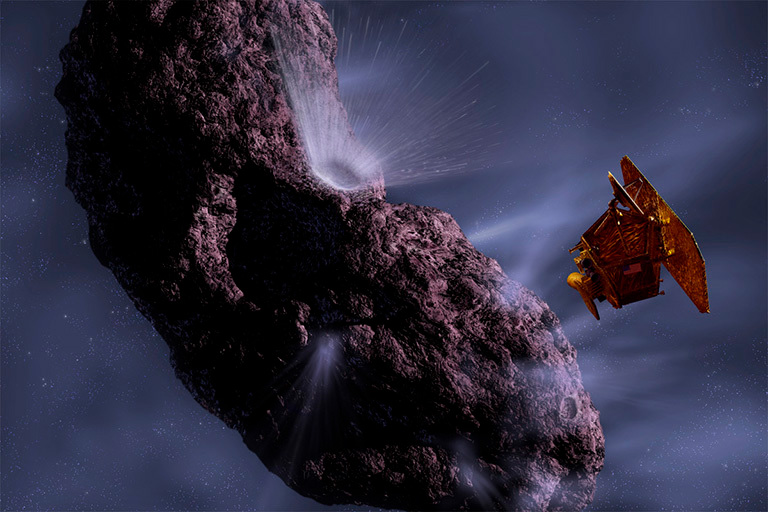
NASA wanted this Independence Day’s cosmic fireworks to achieve a very particular goal: ejecting matter from the bowels of the comet in order to study it later. Before this experiment took place, experts had diametrically opposed predictions about its results.
The reality surpassed the wildest expectations, and the collision caused a massive release of matter. According to various estimates, the comet lost about 5 thousand tons of water and from 10 to 25 thousand tons of dust. Subsequent analysis revealed water ice, volatiles, carbonates, polynuclear aromatics, sulfides, and other components.
After the collision, an impact crater was left on the surface of Comet Tempel. On the other hand, the quality of the Deep Impact images did not allow us to accurately estimate its size. Therefore, NASA decided to send the Stardust spacecraft, which was unoccupied at the time, to the comet. On February 15, 2011, it passed within 200 kilometers of Comet Tempel. The probe managed to find the crater left after the strike. It was 150 meters in diameter (which, again, was much more than expected) and had a clear hill in its center. Apparently, it consisted of matter ejected during the impact which had then settled in the center of the crater.
The Adventures of Rosetta and Philae
All the missions described above were flyby missions in which the spacecraft swept past the comets and photographed their nuclei, trying to collect as much data as possible in a very limited approach time. Obviously, for a more detailed understanding of the nature of “tailed stars,” it was necessary to take the next step and launch an apparatus that would remain close to the comet and be able to study its surface, internal structure, and activity in detail.
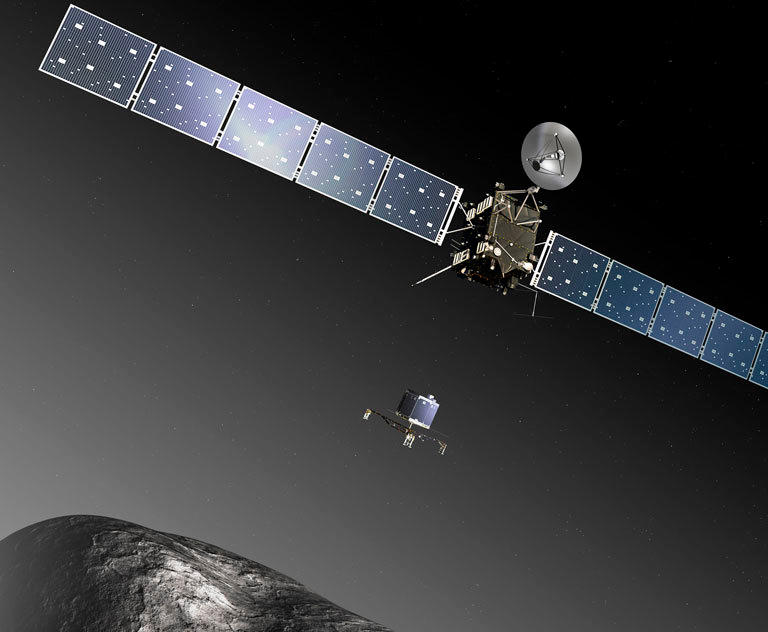
This important step was taken by the European Rosetta mission. Initially, the spacecraft’s target was the comet Virtanen. However, a postponement of the launch date made the comet unreachable for Rosetta, so ESA developed a new flight plan to fly alongside the Churyumov-Gerasimenko comet.
Rosetta reached its goal in the summer of 2014. At that time, Churyumova-Gerasimenko was located at a considerable distance from the Sun, meaning it had rather low activity. This allowed Rosetta to enter a permanent orbit around the comet, passing at a distance of only a few dozen kilometers from its nucleus.
The images taken by Rosetta showed an amazing world unlike any other body in the solar system known to us. It turned out that Churyumova-Gerasimenko consists of two parts, connected by an isthmus. It is believed that it was formed by the “fusion” of two celestial bodies.
Churyumov-Gerasimenko’s surface is covered with a dark crust consisting of compressed ice and dust. Chemical analysis showed that it contains a large number of complex organic compounds, many of which have not been found on other comets. Inside, Churyumov-Gerasimenko resembles a sponge, with 75-85% of its internal volume being empty pocket.
In November 2014, Rosetta dropped the Philae lander onto the comet. Unfortunately, the operation did not go exactly as planned. Due to the failure of its harpoons and brake engine, Philae bounced twice from the cometary nucleus until it finally sank into a crevice, which was in the shadow of a sheer cliff. As a result, the probe was unable to use its solar panels to recharge its onboard battery, which limited its scientific mission to only two days. Despite this, Philae managed to complete its basic observation program, seriously expanding our scientific knowledge about comets.
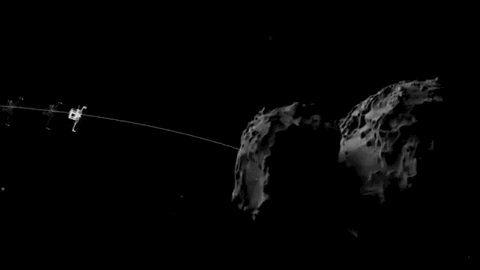
In 2015, Churyumova-Gerasimenko passed the perihelion of its orbit, which gave Rosetta the opportunity to record a wide range of its activities. Among them were jets of gas ejected by the comet, fragments of matter flying into outer space, and landslides and boulders moving along the surface. In addition, the European probe saw the appearance of new cracks and the growth of old ones in the area of the isthmus connecting two parts of the comet. During one of its future approaches to the Sun, Churyumova-Gerasimenko will most likely be unable to withstand the pressure and will break up into several fragments along the line of one of these faults.
The end of the mission was set in 2016. By this time, Churyumova-Gerasimenko began to move away from the Sun and the Rosetta solar panels stopped generating enough energy to continue working. Therefore, in an elegant final maneuver, the engineers landed the craft on the surface of the comet, which became its final resting place.
It is worth noting that in the late 2010s, NASA seriously considered the possibility of sending its own mission to Churyumov-Gerasimenko in order to deliver a sample of its material to Earth. If the project had been implemented, we would have had a unique opportunity to learn how the comet has changed over the years, and also to see Rosetta again. But unfortunately, this mission did not receive the necessary funding. At the same time, it cannot be ruled out that Churyumov-Gerasimenko will be visited in the future by some other earthly messenger who will be able to shed light on the final fate of the European spacecraft.
Future comet missions
In the fall of 2019, almost all the leading observatories on the planet focused on observations of the Borisov comet. This attention is explained by the fact that it arrived in our solar system from interstellar space. Of course, the ideal option would be to study the comet with a specialized apparatus. However, this was physically impossible at the time. The preparation of a space mission takes years, while the interval between the discovery of a new comet and its approach to the Sun is, on average, measured in months.
The European Space Agency has found a solution to this problem – to build a spacecraft that will be brought to a “parked position” in advance, where it will be standing by for the visit of a comet of interest to scientists. This mission is called Comet Interceptor. It will be carried out by ESA with support from JAXA.
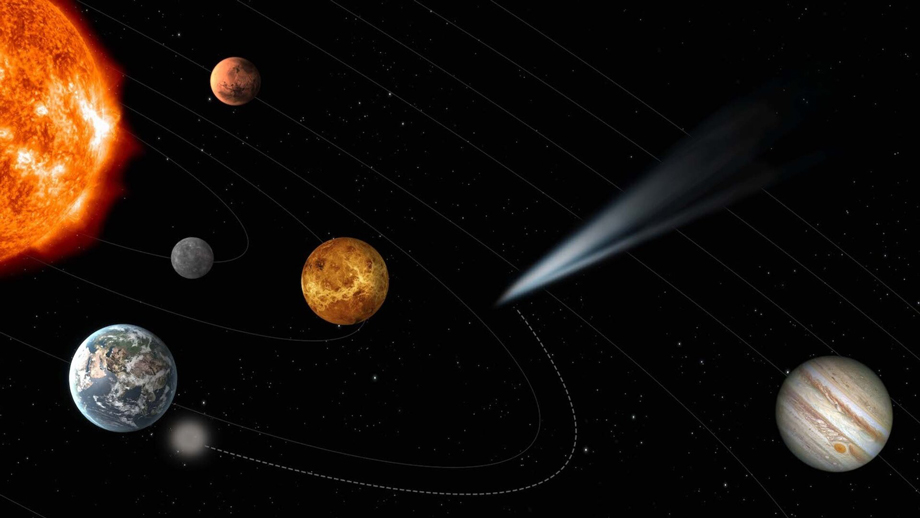
The Comet Interceptor will be launched to the L2 Lagrange point of the Sun-Earth system at a distance of 1.5 million km from the Earth. After finding a suitable comet, it will be directed towards it along a flyby trajectory. The goal of the mission could be either a long-period comet, which is approaching the Sun for the first time and has retained reserves of “primordial” volatile substances on its surface, or a new interstellar comet.
A few weeks before the encounter with the comet, two probes will separate from the Comet Interceptor, carrying their own set of scientific instruments. These are planned to observe the comet from different angles and create a three-dimensional profile of it, collecting the maximum information about its behavior and interaction with the environment. ESA will take over the construction of the main spacecraft and one of the probes, while JAXA will handle the construction of another probe. At the moment, the launch of the Comet Interceptor is scheduled for 2029.
In recent years, scientists have also become interested in studying “intermediate” objects – celestial bodies that combine the characteristics of both comets and asteroids. In the near future, we will witness the launch of two missions to study them.
One of them is called DESTINY+. It is being developed by JAXA and the German Air and Space Center (DLR). Its goal will be the asteroid Phaeton. This is a very remarkable celestial body which moves in a very elongated orbit, crossing the orbits of all the planets of our solar system and reaching its perihelion at only 21 million km from the Sun. In addition, Phaeton has an extended dust tail. Phaeton is assumed to be a “degenerate” short-period comet, which has lost almost all of its reserves of volatile substances.
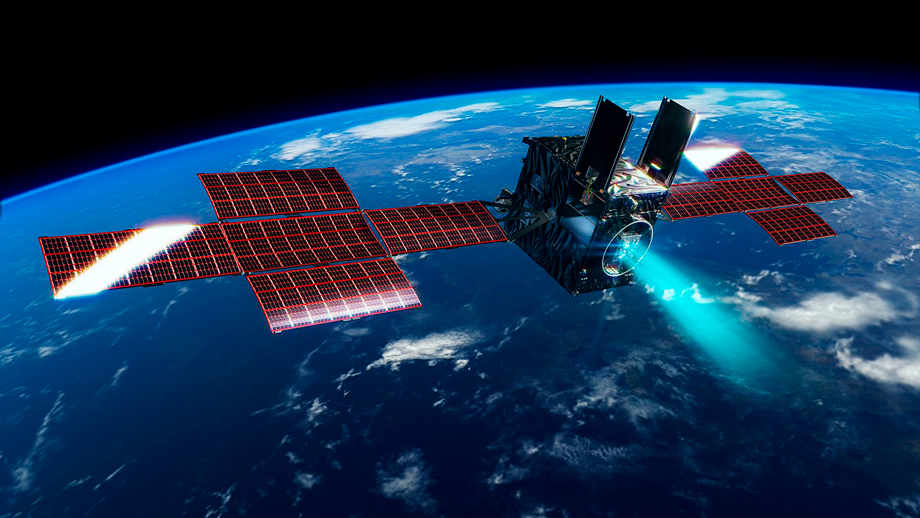
DESTINY+ will have to find out if this is true or not. In 2028, it will perform a close flyby of Phaeton, passing at a distance of about 500 km from its surface. During the rendezvous, the survey craft will analyze particles from the tail and determine their origin, as well as the nature of this celestial body.
Another mission is being developed by China called “Tianwen-2,” scheduled for launch in 2025. Its main goal will be to study and retrieve a sample of the asteroid Kamoalev, which is a quasi-satellite of the Earth. If the Tianwen-2 manages this task, then it will then go to its second target, the 300-meter object of the Asteroid belt known as 311P / PANSTARRS.
311P/PANSTARRS is a very curious celestial body. Its orbit is in the main belt, but it has a comet-like tail. As with Phaethon, some scientists suspect that it is actually a comet. Tianwen-2″ will have to determine what the object actually is and confirm or deny the presence of a satellite. The Chinese probe is scheduled to reach 311P/PANSTARRS sometime in the mid-2030s.

